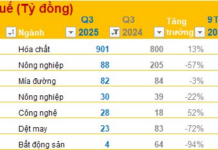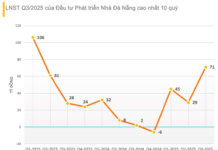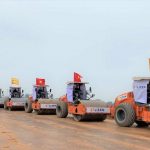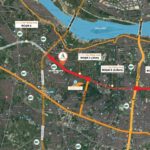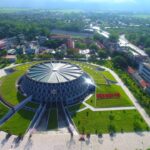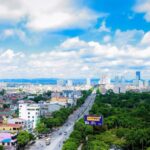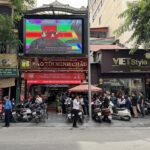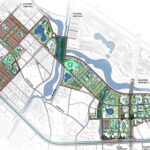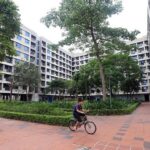The report on the project to invest in and build districts into wards or cities under Ho Chi Minh City for the period 2021-2030, conducted by the Department of Home Affairs in collaboration with the Ho Chi Minh City Institute for Development Studies, reveals some interesting insights.
According to the report, the rapid urbanization and influx of migrants have put immense pressure on the infrastructure of the outlying districts. This has resulted in overburdened infrastructure and services, leading to environmental pollution and directly impacting the lives of residents.
The report suggests that it is crucial to expeditiously study the transformation of these districts into wards or cities, in line with the spirit of the Resolution of the Ho Chi Minh City Party Committee for the term 2020-2025. This transformation is seen as an urgent task to address the challenges posed by rapid urbanization.
Why skip the ward level and go straight to city status?
The report outlines the criteria for considering the transformation of the five districts into wards or cities. It is argued that achieving ward status for these districts before 2030 is unlikely due to the local governments’ inability to meet the stringent ward-level criteria.
On the other hand, the criteria for city status are more attainable for these districts. A detailed comparison reveals that most of the outlying districts fall short of the administrative criteria for urban wards, as the standards are set quite high, akin to those of a special urban area rather than a typical urban area.
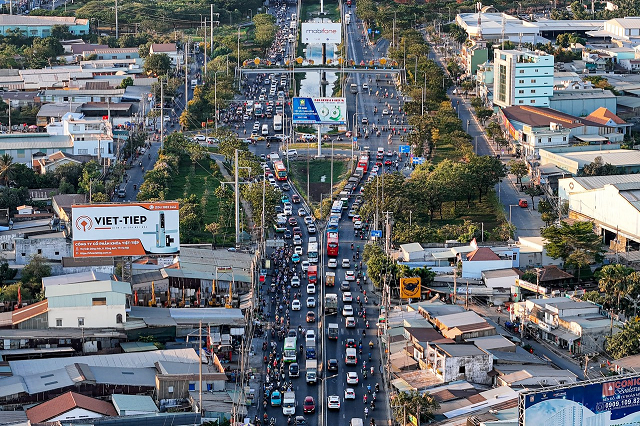
Binh Chanh District is on track to meet the criteria for a third-tier city by 2025. Photo: Nguyen Hue |
One of the key challenges is the requirement that 100% of communes and towns must meet the standards of wards if they are to become wards. In contrast, the city status option only requires a minimum of 65% of communes and towns to meet these standards. Additionally, the standards for education, infrastructure development, and other criteria for becoming a ward are significantly higher than those for transitioning to a city under the city’s jurisdiction.
The option of becoming a ward also presents difficulties due to the large number of agricultural communes in these districts.
On the other hand, the criteria for a third-tier city under the jurisdiction of the city are set at a more achievable level, allowing for the retention of some communes, which would then become outer areas of the new city.
Furthermore, with the city status option, the gaps in the criteria that the five districts currently face are more feasible to address by 2030.
As a result, the report concludes that the transformation into cities under the jurisdiction of the city is the preferred option for the five outlying districts by 2030.
The report also highlights that three districts, Binh Chanh, Nha Be, and Hoc Mon, are well-positioned to achieve third-tier city status by 2025. Meanwhile, Can Gio and Cu Chi are on track to transition to the model of a city under the city’s jurisdiction (third-tier city) by 2030.
Four Core Benefits
According to the report, transitioning from a rural to an urban model offers several practical advantages, categorized into four core benefits.
Firstly, this transformation addresses the issue of infrastructure overload due to population growth. As more people choose to reside in the outlying districts, the existing infrastructure struggles to keep up with the increasing demands.
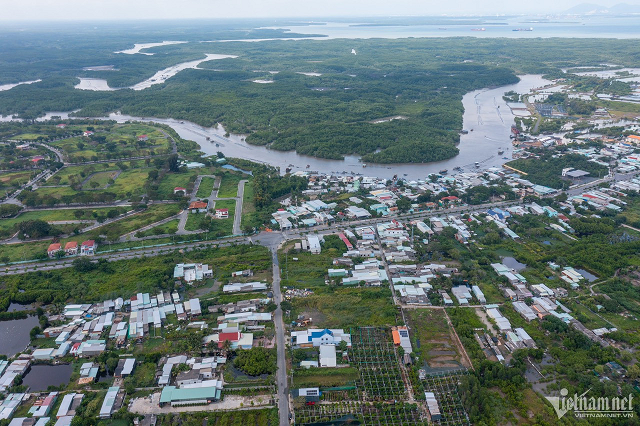
Can Gio District is on track to meet the criteria for a third-tier city by 2030. Photo: Nguyen Hue |
Additionally, the management apparatus has struggled to keep pace, leading to a decline in living standards and environmental degradation. The spontaneous increase in non-agricultural employment has resulted in abandoned agricultural land, causing waste and land degradation.
By transitioning to an urban model, local governments can comprehensively re-plan their areas, designating which regions will become urban and which will remain agricultural. This enables more efficient investment planning.
The second benefit is the acceleration of socioeconomic development in both the outlying and inner areas. The transformation will bring about changes in land use planning and construction, leading to more substantial and sustainable investments in technical and social infrastructure. It will also attract investment from other economic sectors in society.
Furthermore, the transition will create additional job opportunities and help alleviate the population pressure on inner-city wards by providing alternative housing options.
The third benefit pertains to state management and the creation of post-transition development opportunities. Specifically, in terms of organizational structure, the transformation will enable local governments to restructure their party and government agencies to be more streamlined and efficient, while also facilitating digital transformation and administrative reform.
Upgrading from a rural to an urban government strengthens and elevates the state management function to a new level. Additionally, the various levels of urban government will have more opportunities, in terms of institutional arrangements, to ensure the provision of basic and essential public services that meet the diverse needs of the populace.
From an institutional perspective, the transition to an urban government demands higher speed and efficiency in handling tasks, prompting agencies and units to enhance their management capabilities to meet these new requirements.
In terms of human resources, the benefit lies in providing better working conditions for officials, civil servants, and public employees, fostering a more professional environment. This, in turn, elevates the local government’s standing and creates new employment opportunities.
The fourth benefit is the enhancement of educational attainment and overall quality of life for residents.
Transitioning communes into wards attracts more skilled workers, reduces poverty, and improves socioeconomic infrastructure. Additionally, it increases the potential for infrastructure investment and business attraction, providing residents with more opportunities to increase their income.
Rural residents will become urban citizens, integrating into the overall development of urban society.
Ho Van
The Power of Lizen: Consistently Winning Massive Bids
Lizen has achieved a significant milestone by successfully deploying and implementing major high-speed construction projects in 2023. The company’s revenue has reached 2,030.5 billion VND, which is twice the amount compared to 2022. However, the post-tax profit has reached its lowest point in the past 6 years, dropping down to only 118.3 billion VND.
Comprehensive regional connectivity
In addition to building strong physical infrastructure, Ho Chi Minh City needs to strengthen its soft connections with other provinces in the region in order to promote economic development. This includes prioritizing the training of skilled workforce and ensuring access to quality healthcare.
Vietnam’s largest province, yet still feels like a ‘tight-fitting shirt’, population of the dependent cities set to expand almost fourfold.
The Deputy Minister of Construction stated that currently, Nghệ An province is like a tight-fitting garment in terms of development. Changing the functions of urban areas will contribute to the economic and social development, not only for Vinh City but also for the entire region.













